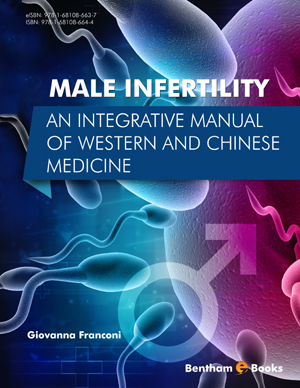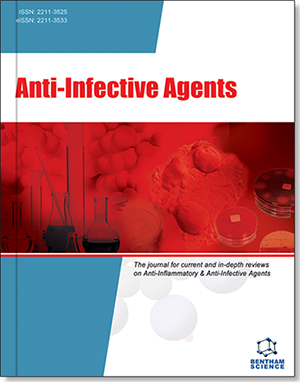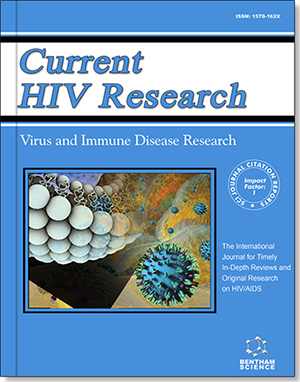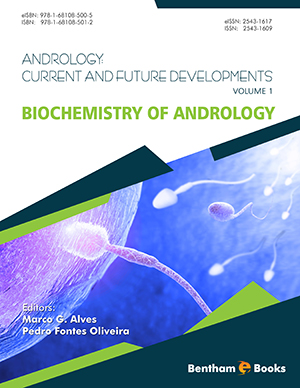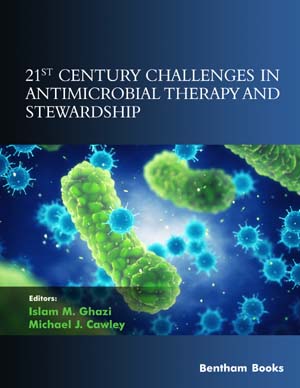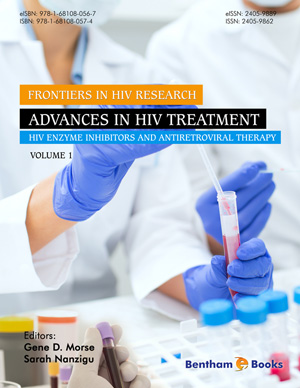Anatomy And Physiology of the Male Genital Tract
Page: 1-13 (13)
Author: Giovanna Franconi
DOI: 10.2174/9781681086637118010013
PDF Price: $15
Abstract
The male genital tract consists of the testes, a ductal system and accessory glands. Sperm is produced in the testes and, combined with the fluids produced by the sex accessory organs, moves through the sperm ducts to reach the female reproductive tract. The chapter summarizes the anatomy and development of the male genital tract and the physiology of sperm production.
Etiology and Pathogenesis of Male Infertility
Page: 14-41 (28)
Author: Giovanna Franconi
DOI: 10.2174/9781681086637118010004
PDF Price: $15
Abstract
The causes of a reduced reproductive function (hypogonadism) may be classified according to the origin of the disease. Pre-testicular factors are due to alterations in the central regulation and the hypothalamic-pituitary-testis axis, while testicular factors (from primitive testicular alterations) manifest themselves as hypergonadotropic hypogonadism and are a major cause of azoospermia and oligozoospermia. When post-testicular factors are present, the reproductive and endocrine functions are normal but there is an obstacle to semen outflow because of occlusions, infections and inflammation of the genital tract. Genetic factors such as karyotype abnormalities, microdeletions of the Y chromosome mutations and polymorphisms are discussed extensively.
Clinical Approach to Male Infertility
Page: 42-53 (12)
Author: Giovanna Franconi
DOI: 10.2174/9781681086637118010005
PDF Price: $15
Abstract
The clinical approach to the infertile man begins with a careful medical history and physical examination, assessing both the andrological and internal medicine aspects. The main objectives of the evaluation are to identify modifiable risk factors and appropriate treatments which may improve male fertility, and to exclude the presence of comorbidities such as testicular cancer, osteoporosis, and endocrine or genetic problems that can be associated with infertility. The laboratory tests described include the evaluation of endocrine tests, of the spermiogram and of genetic studies.
Treatment of Male Infertility
Page: 54-60 (7)
Author: Giovanna Franconi
DOI: 10.2174/9781681086637118010006
PDF Price: $15
Abstract
The medical treatment of male infertility is possible when there is a specific etiological factor that is potentially susceptible to medical care. Hormonal replacement therapy is indicated in hypogonadism with different options depending on the purpose of the treatment. To induce or maintain androgenisation, testosterone should be used, while to induce or maintain spermatogenesis, gonadotropins or GnRH should be used. Hyperprolactinemia can be treated with dopamine agonists. Antibiotic therapy is indicated for symptomatic infections of the genital tract. In idiopathic forms, various empirical treatments have been tried with limited success. Surgical therapy is indicated for congenital or acquired obstruction of the seminal ducts, to extract sperm or testicular tissue, and in varicocele. Assisted reproductive technology, in particular Intracytoplasmic Sperm Injection (ICSI), has revolutionized the prognosis of male infertility, because it has allowed azoospermic men to procreate.
Energetic Anatomy and Physiology in Male Infertility
Page: 61-76 (16)
Author: Giovanna Franconi
DOI: 10.2174/9781681086637118010007
PDF Price: $15
Abstract
The focus on fertility and to ensure offspring was a very important element in the Confucian tradition because of the practice of ancestor worship. Even in the Taoist tradition fertility was significant, since the practices for obtaining longevity and immortality used techniques in the area of sexuality and reproduction. The anatomy of the male genital tract in Chinese medicine uses specific terms for visible structures such as the external genitalia, while there are more functional and structural terms for some internal structures. The chapter also describes the relationships of the Organs and Channels with the male reproductive system and the energetics of the spermiogram. The term zong jin has been extensively commented upon, because its different layers of meaning can reveal a complex and fascinating approach to male sexual and reproductive functioning.
Traditional Chinese Medicine in Male Infertility
Page: 77-89 (13)
Author: Giovanna Franconi
DOI: 10.2174/9781681086637118010008
PDF Price: $15
Abstract
Treatment with TCM offers many treatment options that can be tailored to the individual subject based on the symptoms and signs present, and the imbalance to be treated. The main TCM syndromes present in male infertility are described.
Classical Chinese Medicine in Male Infertility
Page: 90-99 (10)
Author: Giovanna Franconi
DOI: 10.2174/9781681086637118010009
PDF Price: $15
Abstract
In Classical Chinese Medicine (CCM) the Kidney and Jing are at the root of reproduction. In CCM, the Kidney Jing is also nourished by the Jin Ye Fluids, which are lowered from the Lung. The Organs that have the most important role in male reproduction in CCM, in addition to the Kidney, are the Lung, the Spleen, and the Stomach. The formation of the Jin Ye Fluids and the points which control the formation of sperm are clearly described and discussed.
Clinical and Experimental Studies of Acupuncture in Male Infertility
Page: 100-109 (10)
Author: Giovanna Franconi
DOI: 10.2174/9781681086637118010010
PDF Price: $15
Abstract
The published scientific studies on acupuncture in male infertility are reviewed in this chapter. In general, they are of poor quality in both the study design and the low number of patients treated, but some studies suggest a role for acupuncture in male infertility.
Integrated Treatment in Male Infertility
Page: 110-128 (19)
Author: Giovanna Franconi
DOI: 10.2174/9781681086637118010011
PDF Price: $15
Abstract
While Western medicine is based on the paradigm of “one gene, one disease, one drug” and has a reductionistic approach, Chinese medicine is based on functional relationships, and evaluates the patient's pattern of signs and symptoms. Integration of Chinese medicine into Western medicine may be based on changes in sperm number, motility or morphology correlated to diagnostic patterns of TCM syndrome differentiation. The obstructive azoospermias may be secondary to Blood, Phlegm or Dampness stagnation or Heat that blocks the sperm channel. The non-obstructive azoospermias are secondary to Kidney and Liver problems. The decrease in sperm motility may depend on problems in the Sperm Chamber, which is not heated when there is Qi deficiency, or is disturbed by Dampness and Heat. At the base of oligozoospermia there may be a deficiency of congenital Kidney Jing, or sexual excesses which consume Jing, or a Spleen deficiency which then fails to recharge the Kidney, or Perverse energies affecting the Sperm Chamber and causing infertility.
Introduction
Male Infertility: An Integrative Manual of Western and Chinese Medicine is a holistic manual on male infertility for the medical practitioner. The book integrates the conventional (or Western) medical approach to male infertility with traditional Chinese medicine. Key Features: - information about several aspects of male reproductive medicine (anatomy, physiology diagnosis, fertility treatments) - information about the role of traditional Chinese medicine in treatment of male infertility (including energetic anatomy and Qi concepts) - complete guide to acupuncture techniques - easy-to-consult tables and appendices for quick reference The unique, integrated approach to addressing male infertility makes this handbook essential reading for practicing and training andrologists, Chinese medicine practitioners, acupuncturists, as well as researchers and counsellors in the field of reproductive medicine.

